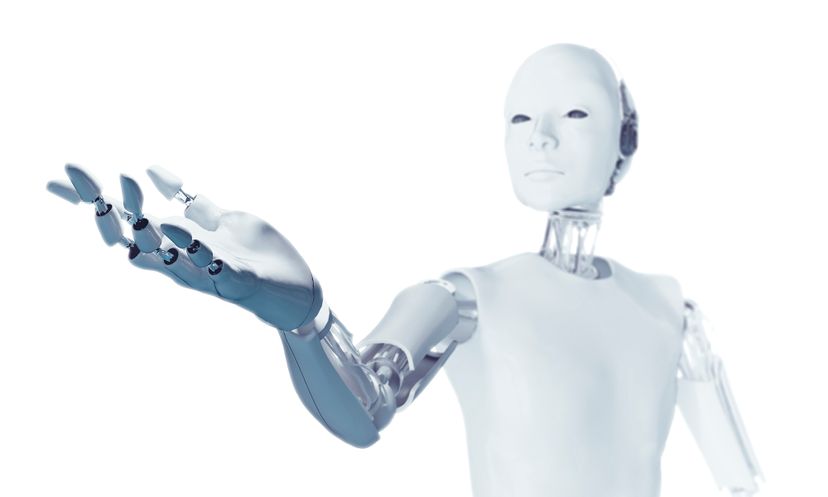
Definitions abound for the word "robot," but the Robot Institute of America tried to bring a little order to the chaos in 1979. Here’s how the bot-loving group defined the term: A robot is a reprogrammable, multifunctional manipulator designed to move material, parts, tools, or specialized devices through various programmed motions for the performance of a variety of tasks.
The manipulator of an industrial robot is made up of a sequence of links and joints. The links are rigid members connecting the joints. The joints (also called axes) are the movable components of the robot that enable one link to move relative to another.
The playwright Karel Capek invented the term "robot" (after the Czech word for "labor") for his play, "Rossum’s Universal Robots," published in 1920. The play featured a scientist who creates humanlike machines that eventually try to dominate the human race. It would be a familiar theme in modern science fiction.
Advertisement
Isaac Asimov introduced the word "robotics" in 1942 to describe the branch of science dealing with the design, construction, operation and application of robots. It wasn't a work of nonfiction, however. It was a short story -- "Runaround" -- about a robot sent to Mercury.
Jason is a remotely operated vehicle, or ROV, designed and built by the Woods Hole Oceanographic Institute's Deep Submergence Laboratory. Since 1988, the system has made hundreds of dives and explored seafloors in the Pacific, Indian and Atlantic oceans. The ship that accompanies Jason is the Medea, named after the sorceress married to Jason.
In 1956, inventor George C. Devol and engineer Joseph F. Engelberger met over drinks to discuss the writings of Isaac Asimov. After the encounter, Engelberger believed that robots were ready to move from the pages of science fiction and into American factories. He founded Unimation to bring the concept to life, while Devol wrote the first patents.
Advertisement
Unimation designed its initial robot specifically for the auto industry. Known as Unimate, the robot's first home was a General Motors plant, where it worked with heated die-casting machines.
It began as an offshoot of Stanford University in 1946, but SRI became an independent enterprise in 1970, when it changed its name to SRI International. From 1966 to 1972, SRI's artificial intelligence team worked on "Shakey," a moving robot that could maneuver around obstacles.
Graduate student James Adams constructed the first version of the Stanford Cart in 1960 to explore the possibility of controlling a lunar rover from Earth. In 1977, Hans Moravec rebuilt the cart and added a television camera. Equipped with its new stereo vision, the Stanford Cart was able to cross a chair-filled room without bumping into obstacles in 1979.
Advertisement
Why build a whole body when an arm will do? By 1974, Victor Scheinman's appendage -- known as the Stanford Arm -- could assemble a Ford Model T water pump using input from optical and contact sensors.
It's a dirty job, but somebody -- preferably a robot -- has to do it. And that's exactly what robots did (and still do) in the auto industry: perform tasks that humans find particularly distasteful.
Robots work 24 hours a day and never tire of … never tire of … never tire of ... doing the same thing over and over again. That makes them really good at certain tasks on an automotive assembly line, such as painting, stamping and welding. But robots can't "see" as well as humans, which means they have difficulty spotting small imperfections that need attention.
Advertisement
The Japanese people have had a long-time love affair with robots. In fact, Japan employs more than 250,000 industrial robot workers -- more than any other nation. According to some experts, the robots help fill the gap created by Japan's declining birthrate and shrinking workforce.
In 1981, a 37-year-old worker at a Kawasaki plant was performing routine maintenance on a robot. When he failed to switch the machine off properly, the robot moved in for the kill. Actually, its powerful hydraulic arm accidentally pushed the engineer into a grinding machine. Ouch.
PackBot, created by iRobot, is small and sure-footed. It can climb stairs, somersault over rubble and squeeze through narrow passages, making it an ideal companion for military personnel and first responders. More than 4,500 units have trundled across Iraq and Afghanistan, and a few were dispatched to Japan after the 2011 tsunami. At the Fukushima nuclear plant, the PackBot provided some of the first glimpses of the damaged facility.
Advertisement
"Technology is rendering middle-class skills obsolete": That's the conclusion of MIT economist David Autor, whose study found the routine work of secretaries, bank tellers and other clerks to be highly vulnerable to automation.
To prove that a robot can move you emotionally, scientists at Fraunhofer-Gesellschaft, the largest organization for applied research in Europe, converted an industrial robot into a portrait artist. It wasn't just a publicity stunt. The robotics team was exploring a camera technology that has the potential to improve machine vision. The camera's software seeks out contrasts in the image and translates the information into movements of the robot's arm.
Researchers at Carnegie Mellon did something the world thought impossible: They made a Pontiac TransSport minivan seem cool. How? They packed computers and video sensors into the vehicle so it could steer itself at legal speeds on roads and highways. Then they named it NavLab and, in July 1995, went on a road trip, letting the machine handle all of the steering duties on the 3,000-mile (4,828-kilometer) journey.
Advertisement
When you're in control of the car, you're responsible for any accidents. When a robot controls the car, the robot -- or, more precisely, the robot manufacturer -- is responsible. Auto execs hyperventilate just thinking about it.
MIT roboticists Colin Angle, Helen Greiner and Rodney Brooks co-founded iRobot in 1990. The company's early robots were designed for defense and public safety. Then, in 2002, it launched the Roomba floor vacuuming robot and became a household name.